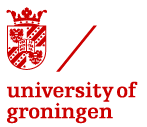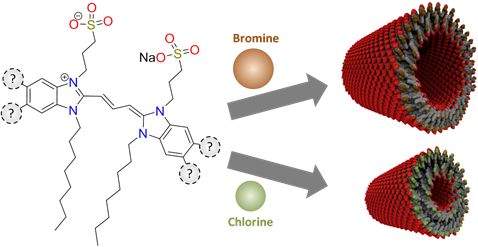Smart Molecules Modify Nanotube Morphology
June 14, 2017
Natural photosynthetic complexes have evolved to successfully operate under extreme low light conditions. Their tubular structure inspired the scientists to mimic nature with artificial nanotubes made of smart molecules, which are “programmed” to self-assemble in tubes without any human intervention. Changing the nanotubes sizes, which is of great interest for potential applications, requires re-programming the molecules.
In an all-RUG collaboration, the Optical Condensed Matter Physics and Theory of Condensed Matter groups (both at the Zernike Institute for Advanced Materials), have joined forces with the groups of Chemical Biology 2 (Stratingh Institute for Chemistry) and Electron Microscopy (Groningen Biomolecular Sciences and Biotechnology Institute) to demonstrate how the radius of self-assembled nanotubes can be controlled by exchanging only 4 atoms in the individual molecular building blocks. Using a combination of synthetic chemistry, cryogenic transmission electron microscopy, optical absorption measurements, and exciton theory they have shown that the underlying brickwork of molecules responsible for photonics functionality, is conserved – an issue far from trivial, considering the sheer number and complexity of intermolecular interactions. This paves the way to systematic studies of how inherent size variations in natural and artificial light-harvesting systems aid the highly efficient energy transport.
The results of this work are published in The Journal of Physical Chemistry Letters (B. Kriete, A. S. Bondarenko, V. R. Jumde, L. E. Franken, A. J. Minnaard, T. L. C. Jansen, J. Knoester, and M. S. Pshenichnikov, “Steering Self-Assembly of Amphiphilic Molecular Nanostructures via Halogen Exchange”, J. Phys. Chem. Lett., 2017, 8, pp 2895–2901; DOI: 10.1021/acs.jpclett.7b00967




